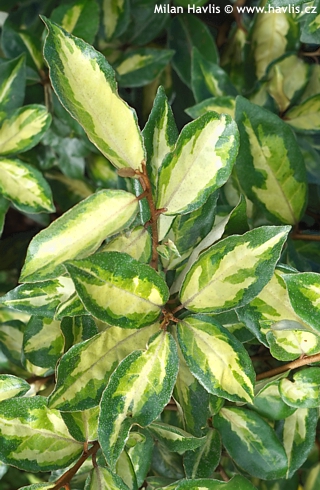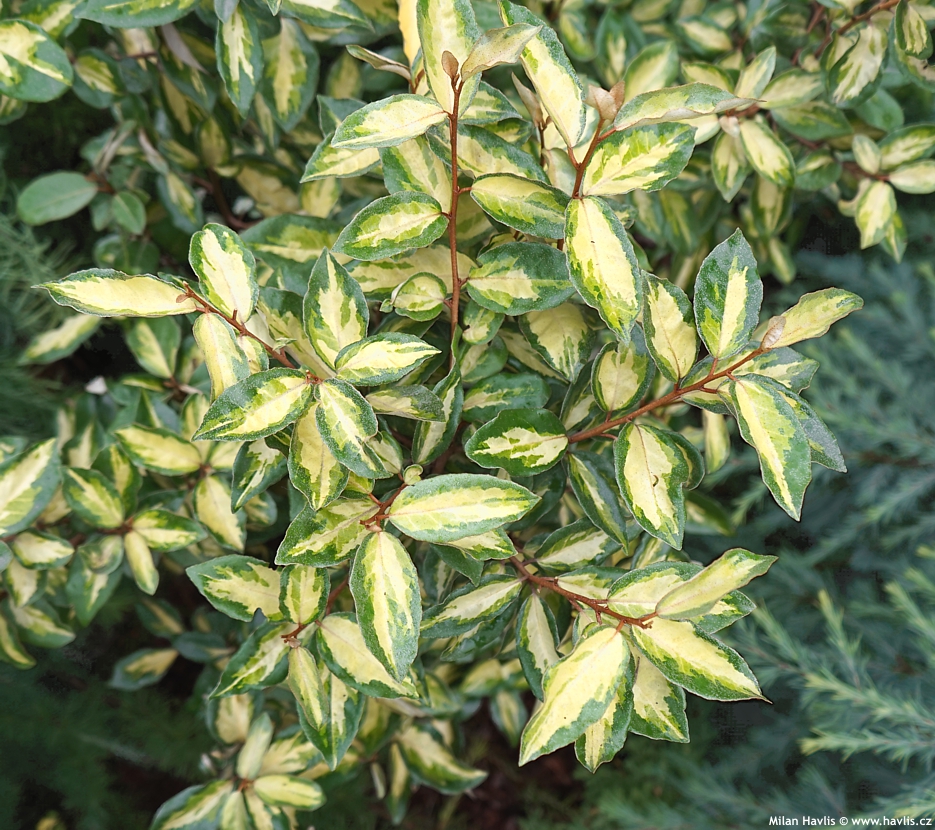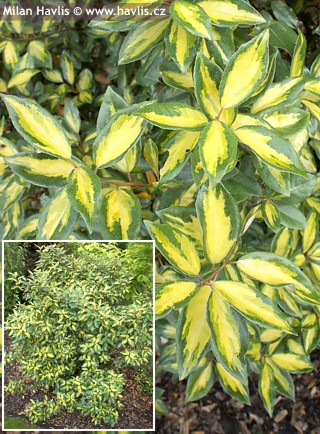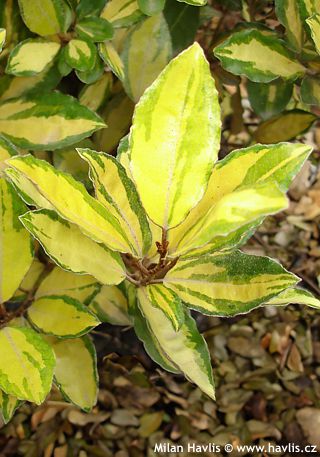Elaeagnus x ebbingei 'LEMON ICE' evergreen silverthorn
size/type
medium-sized shrub,taller shrub
usual height
2-3m
usual width
1,5-2,5m
leaves
evergreen broadleaf
colour of leaves
flowers
less showy but noticeable
blooming time
September-October
location
full to partial sun
soil type
any (acidic to alkaline)
soil moisture requirements
evenly moist but well-drained
USDA zone (lowest)
7 (down to -23°C)
winter protection
for zone 5+6

for zone 7

categorized
Elaeagnus
Evergreen silverthorn is a natural hybrid of e. macrophylla with large, evergreen, rather rounded leaves and vigorously growing e. pungens with narrower foliage and thorns. It is sometimes called Russian olive which is not correct as this name is already used for its deciduous sister e. angustifolia. It is described to have been discovered by a Dutch horticulturist Simon Doorenbos (1891-1980) who named it after another Dutch botanist J.W.E. Ebbinge in 1929. However, many years later it was pointed out that a Swiss botanist Camille Servettaz (1870-1947) found this mutation, too, and named it elaeagnus x submacrophylla already in 1909. In spite of that, the whole horticultural world still sticks to e. x ebbingei and we do, too, if you don’t mind.Description of the plant:
If you are fond of variegated cultivars of evergreen silverthorns, e.g., Limelight, there is an improved version of it called Lemon Ice. It has slightly broader leaves and a more upright growth and bushier, more compact habit. The leaves have dark green margins and a light to medium deep yellow interior that can take up to 80% of the leaf surface. They are evergreen, leathery, glossy, and rather flat (not undulate). Young leaves emerge pale beige and exhibit tiny dots as if sprinkled with stardust. They are fully coloured withing approximately 4-6 weeks. Like most variegated plants, Lemon Ice silverthorn, too, occasionally produces reversed branches with green leaves. Those are more vigorous and need to be removed as soon as spotted as they might suffocate and overgrow the coloured part of the plant. The orange-brown color of the twigs is more pronounced with the arrival of cool autumn weather.Silverthorns are valued not only for their colourful leaves and fast growth, but they also offer flowering in autumn. The flowers are small and inconspicuous, but their fragrance is from heaven. On warm and sunny autumn days, it releases a very pleasant and sweet scent, something between carnation, lilac and jasmine, in the area of a few meters around it. If the winter is mild, small, edible fruits ripen during May. They are deep red, approx. 1.5 cm long ovals with a stone. The taste is reminiscent of sour cherries but sweeter, and they are best when they start to fall off shrub – then they are fully mature.
Silverthorns are nice specimen shrubs as well as great hedging plants. Suitably combined with other shrubs with contrasting foliage colour they do a great job. Mix them together with photinias, laurels, large- and small-leaved hollies, or hardy eucalyptus. Together, they will create a unique, evergreen, and attractive hedge that will look great throughout the year.
Lemon Ice silverthorn grows quickly, 30-50 cm per year, and can be pruned in any way and anytime from spring to autumn. It is not demanding when it comes to soil fertility or pH. It just needs free-draining soil (no clay or heavy, compacted ground), and a good layer of mulch for the winter to prevent the ground from freezing too quickly. In regions with stronger frosts, we recommend growing it in winter shade. Still, even after severe winters, it readily regenerated from undamaged wood. It is hardy to min. -23 °C (USDA zone 6). Slightly lower temperatures can only kill its foliage but its woody framework usually remains unharmed. During frost-free periods of winter watering is recommended on too dry sites, especially of recently planted shrubs.
Last update 09-09-2022
WANT TO TRY A SIMILAR PLANT?









































